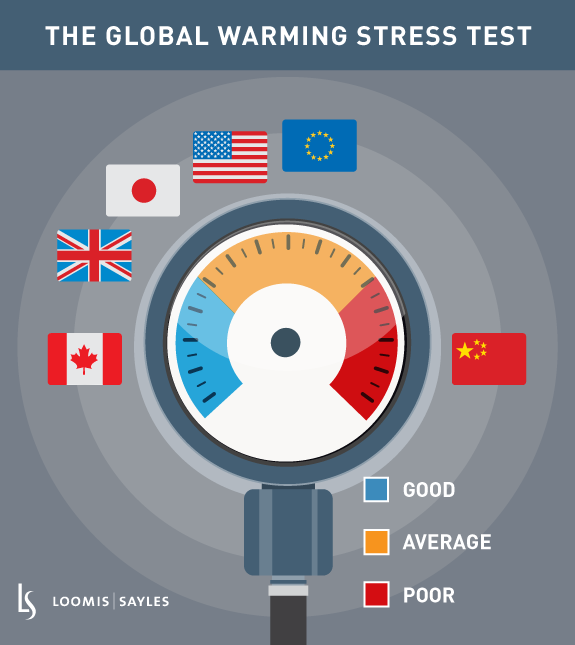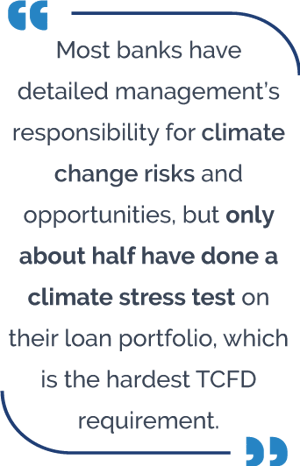Over the past few years, banks have begun to voluntarily disclose their exposure to climate change risks. It is a good start, but I believe there is more to be done. The disclosures should be more robust and I think they should be mandatory for large banks. The information is critical to bank management teams and investors, both of whom need to understand the challenges ahead.
The nature of the risks
For banks, the risks fall into two buckets: physical and transition. Physical risks are more obvious and more familiar: wildfires, droughts, hurricanes, rising sea levels, any of which may affect the bank and its customers. Transition risks refer to problems that could arise if the world shifts more rapidly than expected to a low-carbon economy. Were that to happen, I believe assets like oil fields could lose their value quickly.
Climate risks pose potential hazards to banks through their lending books, in my view. Under certain circumstances they could also ensnare banks in litigation or cause damage to their reputations. I believe managements need to be on top of this information so they can make smart decisions. For investors, disclosures about all risks—economic, regulatory, climate—help them evaluate their holdings and compare one bank to another.
Disclosure standards emerge
Until recently, investors had little to go on. Bank information on climate issues tended to be promotional, lacking in detail and hard to compare. In order to change that, in 2017 a private-sector initiative, the Task Force on Climate-Related Financial Disclosures (TCFD), released voluntary disclosure guidelines. International bank regulators have lent their support to the effort. Most of the world’s 30 global systemically important banks have signed on, but so far only a handful follow all of the recommendations.
My research on the 30 global systemically important banks found a very wide range of compliance with the TCFD standards currently. Broadly speaking, the Canadian banks did the best, the Chinese banks the worst, with banks from the US, UK, Japan and the eurozone falling somewhere in between.

Some of the TCFD’s requirements are simple and straightforward. On governance issues, for instance, banks must explain the role their boards and managements play on climate policy. Roughly two-thirds of the 30 banks have met this requirement.[i] In other areas, I believe banks will have to work harder. Gathering detailed climate information from their clients could be a multi-year task.
The toughest assignment will be developing climate change scenario analysis in my view. How will the banks fare if the world warms slowly or more quickly? What will the risks look like if the transition to a low-carbon economy is disorderly rather than more predictable? Not surprisingly, only about half of the 30 banks say they have performed this task.

A good analogy for bank investors would be the economic stress tests regulators demanded after the financial crisis of 2008-2009. In effect, the new scenario analysis would be a climate stress test, revealing who is best prepared to cope with a range of possible climate futures.
A time to act
Given the importance of this data, I think the disclosures should be mandatory for large banks. Some countries are moving in that direction. In September 2020, New Zealand became the first country to make TCFD climate disclosures mandatory for financial institutions from 2023 onward. The UK announced this week that it will make TCFD climate disclosures mandatory from 2025. And the European Union is working on new environmental disclosure rules for banks.
All of the US-based globally systemically important banks have pledged their support for TCFD climate disclosures. US regulatory support for climate-related disclosure is likely to increase under the incoming Democratic administration. I now expect the US will join the Network of Central Banks and Supervisors for Greening the Financial System, a group that already includes the central banks of every other G7 country.
I believe climate change poses a significant risk to our economic future. And as this summer’s devastating wildfires on the west coast demonstrated, the future could be closer than we realize. Climate change also creates potential growth opportunities for banks too, for funding fast-growing renewable energy companies. Banks are essential to the health of the global economy. I believe they need to get this issue right.

[i] As of September 30, 2020.
MALR026379
Commodity, interest and derivative trading involves substantial risk of loss.
This is not an offer of, or a solicitation of an offer for, any investment strategy or product.






